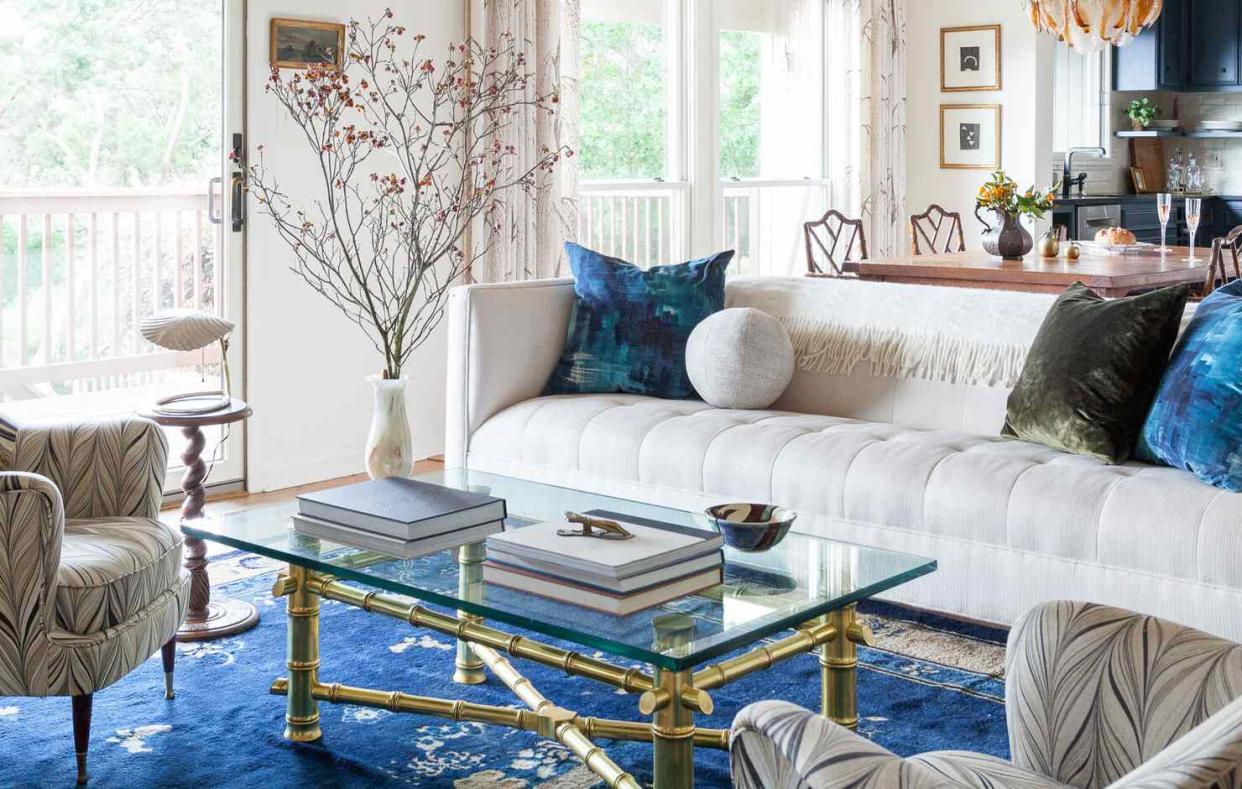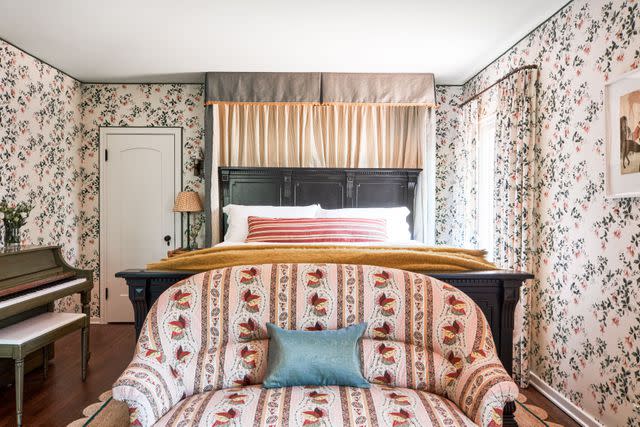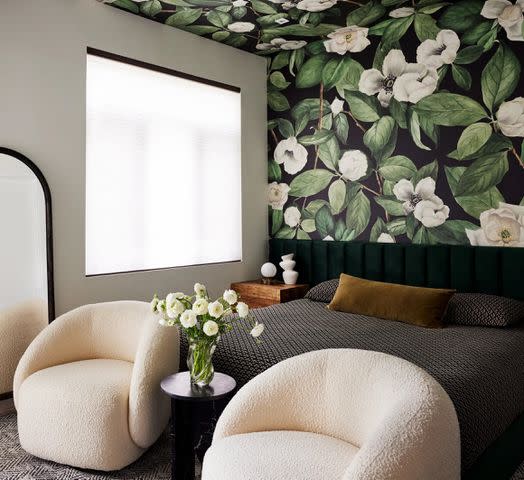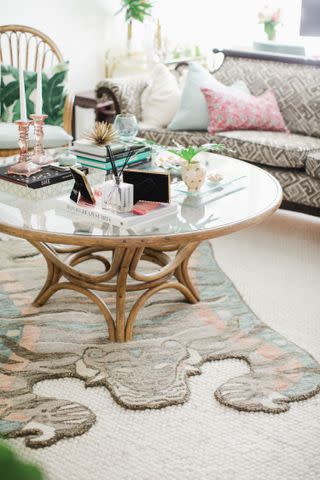How to Mix and Match Textures and Patterns, According to Designers

Erin Williamson
It seems like mixing and matching patterns in your home is surely only achievable by a designer. Surely, their expert eye could avoid any pattern-clashing catastrophe. But, thanks to the following insights from designers, you're just a few short steps from understanding how to better weave together different materials in a stylish, sophisticated manner.
Below is what you'll need to keep top of mind with regard to scale, weight, styling, and more.
Keep Scale Top of Mind
When mixing and matching different textures and patterns in the home, it is equally important to pay close attention to both scale and material, says Christine Zippert, designer and founder of CC Zippert. For example, she explains, mixing two floral patterns together is more than acceptable if one pattern is larger in scale and the other is smaller.

Design by CC Zippert / Photo by Madeline Tolle
Pay Attention to Weight When Mixing Textures
Materials vary in thickness, and when you're interchanging textures, be mindful of certain weights, as they shape a room's mood and feel.
"Take into account the home's location, architectural style, and how the spaces will be utilized," says Megan Paulson, founder and principal designer at 22 Design House. She notes that if you wish to design a coastal-style home, draw upon light-weight, natural-looking materials and incorporate accent pieces with small-scale motifs and a bit of grasscloth and jute.
"Isn’t it incredible how you can envision this whole design story coming together without even specifying a color palette?" she says.
Use Your Existing Knowledge of Fabrics to Shape a Room's Mood
As Zippert points out, we're interacting with all different kinds of textures every single day as we select clothing and accessories from our closets.
"You probably know more than you think about textures just from getting dressed season to season—linens feel more casual and airy, silk and wool feel more tailored and sophisticated, and knits are cozy and moody," she says.
Taking these descriptions into account, think about how you would like a specific space in your home to feel and then choose materials accordingly.

Keep in Mind That Some Materials Don't Play Nicely Together
This statement pertains less to aesthetics and more to how materials interact with one another, literally.
"Velvet seems to find a way of everything sticking to it, so avoid chenille or fuzzy blankets and pillows in combination." Jenny Williamson, principal designer at West Rose Design, explains. On the flip side, she loves pairing these types of soft blankets with buttery leather furnishings and accents.
"A little coolness from the leather mixed with the warmth of a cozy blanket is the chef’s kiss of comfort," Williamson notes.
There is Power in Threes
Designers love grouping objects in threes when styling, but it turns out that this is a magic number in relation to textural pieces, too. For Williamson, this means mixing together an organic pattern, such as a floral or a geometric pattern, and then finishing off the look with a solid color.
Do a Test Run First
Remember that you can always conduct a small trial before committing to specific combinations of textures and patterns within your space. Williamson advises first deciding upon your color palette and then sourcing patterns in the same or complementary tonal ranges.
By utilizing a consistent color scheme, the pattern-on-pattern look will more easily come together, she notes. Then, keep working on additional textures and solids. Still stumped?
"If in doubt, lay it out," Williamson suggests. "Get samples of the fabrics and place them next to each other—take a step back and see what’s matching and what’s clashing."
Don't Forget to Use Leather, Wood, and Glass
Boucle, jute, and velvet are all beautiful, but don't underestimate the power of leather, which is one of Paulson's favorites.
"It's one of the most diversified natural textiles and can be used in some sort of facet in most interiors," she says, and appreciates the multiple-grain textures and colors from which to choose. to choose from, along with a multitude of colors. Leather screams durability, comfort, and longevity, the designer adds.
Consider classic wood to consider when designing a space, too, says Victoria Meadows, the principal lead designer of her eponymous firm. As she states, "A natural texture is hands down the most versatile texture."
Best of all, wood can be used in so many ways, the designer says, highlighting side tables, furniture frames, and lamps as just a few examples. Additionally, Meadows says, be mindful to use some glass in your space, too—using glass in a room adds a little bit of sparkle.

Design by Victoria Meadows / Photo by Eve Greendale
Read Next: 10 Underrated Pieces of Furniture Designers Actually Love
Read the original article on The Spruce.

